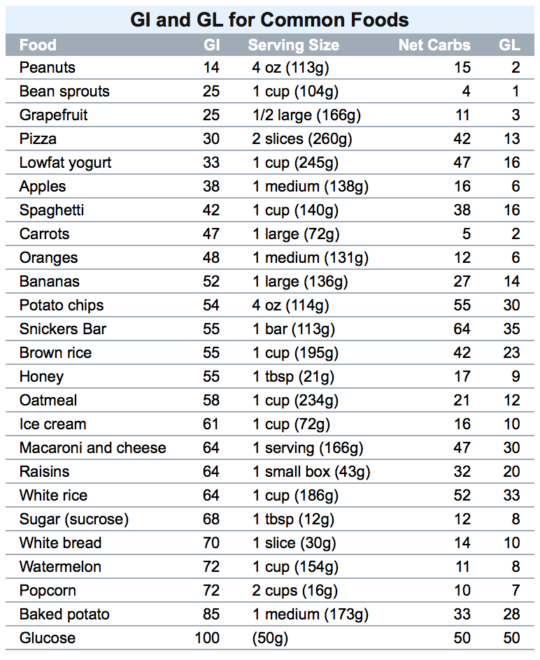Glycemic Index Diet and Diabetes
Written by: Beyond Type 1 Editorial Team
2 minute read
September 12, 2017
The Glycemic Index Diet was designed to help people with diabetes control their blood sugar levels. The diet focuses on carbohydrates, with the goal of eating foods that produce a steady rise in blood sugar instead of the spike in blood sugar created by eating foods that are quickly digested.
Editor’s Note: By providing a place for the community to share real life experiences we hope you find inspiration and new ways of thinking about management. We encourage you to approach these offerings as you would a buffet—review the options, maybe try a few new things and come back for what works best for you. Bon Appetit! Check out our library of resources on Food.
What is the Glycemic Index Diet?
The Glycemic Index Diet was designed to help people with diabetes control their blood sugar levels. The diet focuses on carbohydrates, with the goal of eating foods that produce a steady rise in blood sugar instead of the spike in blood sugar created by eating foods that are quickly digested. Due to the high fiber content of most foods in the glycemic index, those following the diet often feel fuller and are able to lose weight without feeling hungry.
Foods on the Glycemic Index Diet are scored on a scale of 0 to 100 based on how much they raise your blood sugar level.
- High-GI foods (with scores of 70 or higher) include white rice, white bread, pretzels, white bagels, white baked potatoes, crackers, sugar-sweetened beverages and (surprisingly) watermelon!
- Medium-GI foods (with scores of 56-69) include bananas, grapes, spaghetti, ice cream, raisins and corn.
- Low-GI foods (with scores of 55 and under) include oatmeal, peanuts, peas, carrots, kidney beans, hummus, skim milk and most fruits.
What is glycemic load (GL)?
Although most starches have a high glycemic index (GI), eating a small portion will result in a relatively slight glycemic response. This is because your response is dependent on the type as well as amount of carbohydrate that is eaten. You can control glycemic response by limiting your portion of carbs and/or by consuming low-GI foods.
When eating according to the Glycemic Index Diet, you try to eat more foods in the low-GI category, and fewer in the high-GI group. Here are a list of common foods and their Glycemic Index (GI) as well as glycemic load (GL) from SELFnutritionData.com:

What are the potential benefits for those with Type 1 diabetes?
Studies of patients with type 1 diabetes (T1D) found replacing high-glycemic-index carbohydrates with low-glycemic-index carbohydrates improves blood sugar control and reduces hypoglycemic episodes. As a result, all the major diabetes organizations (including the American Diabetes Association, the Canadian Diabetes Association, and Diabetes UK) advise people with diabetes—both type 1 and type 2—to use the Glycemic Index as a way to help healthfully manage their condition.
In addition, the Glycemic Index Diet also is associated with a reduction in a variety of chronic diseases, including heart disease.
What are the potential risks?
The Glycemic Index Diet can be confusing, since some healthy foods have a much higher glycemic value than unhealthy foods. In addition, the glycemic index does not account for the typical serving size of foods consumed, which can make it complicated to use.
What about the Glycemic Index Diet and Type 2 diabetes?
The existing evidence suggests that replacing carbohydrates higher on the glycemic index with carbohydrates lower on the glycemic index reduces the risk of developing type 2 diabetes. In addition—just like for those with T1D—the Glycemic Index Diet can help those with type 2 diabetes (T2D) more easily manage their blood sugar levels.

Author
Beyond Type 1 Editorial Team
Beyond Type 1 is the largest diabetes org online, funding advocacy, education and cure research. Find industry news, inspirational stories and practical help. Join the 1M+ strong community and discover what it means to #LiveBeyond a diabetes diagnosis.
Related Resources

Coverage of the American Diabetes Association (ADA) Scientific Sessions is brought to you by the...
Read more

Editor’s note: This story is about a young woman who was able to stop taking...
Read more

When it comes to losing weight, it’s the little things that add up. Little decisions...
Read more

